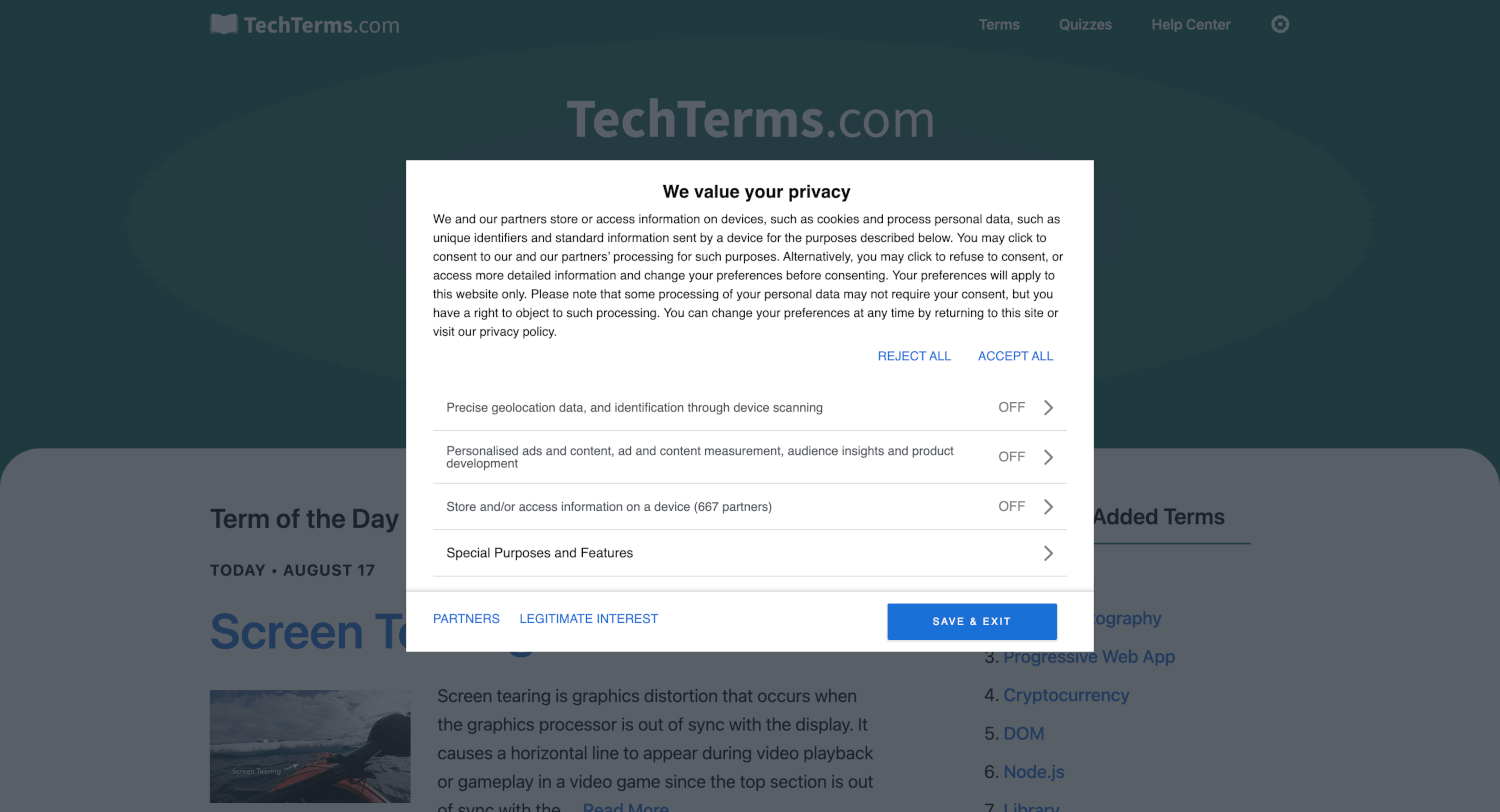TCF
Stands for "Transparency Consent Framework."
The TCF is an open-standard framework that helps websites and apps obtain consent from their users to collect personal data for online ad targeting and other purposes. It was developed by IAB Europe — a trade association for online advertisers — to help website owners comply with the privacy requirements in the General Data Protection Regulation (GDPR).
Instituted in 2018, the GDPR is designed to protect the personal data of EU residents, and requires websites and apps that collect, store, and process user data to first ask for consent. The TCF helps website and app owners comply with the GDPR by providing clear guidelines on asking users for consent, and what information they must disclose during the process. By laying this information out clearly, the TCF can help provide a consistent experience across websites and apps that complies with the law.
The TCF also includes a set of technical specifications for implementing those policies. It lays out requirements for Consent Management Platforms (CMPs) — the software tools that help track when users consent to store their data. CMPs provide a user interface that asks for consent, and a database that records when users grant it. Another aspect of the TCF tracks third-party vendors with access to personal data, like advertising networks and data analytics firms. It maintains a global vendor list of companies that adhere to its guidelines and allows developers to choose which vendors they work with.
The TCF also outlines how to consistently encode and transmit data using a "transparency and consent string." This string packs in data about the user's consent choices, including what data they consent to share and which type of vendor it may be shared with. The personal data covered by the TCF generally includes anything that could identify a website or app's user, particularly when it involves tracking and targeted advertising. Some examples of personal data include device information (like the operating system or web browser), IP address, geolocation data, user ID, and demographic information like age and gender.

 Test Your Knowledge
Test Your Knowledge